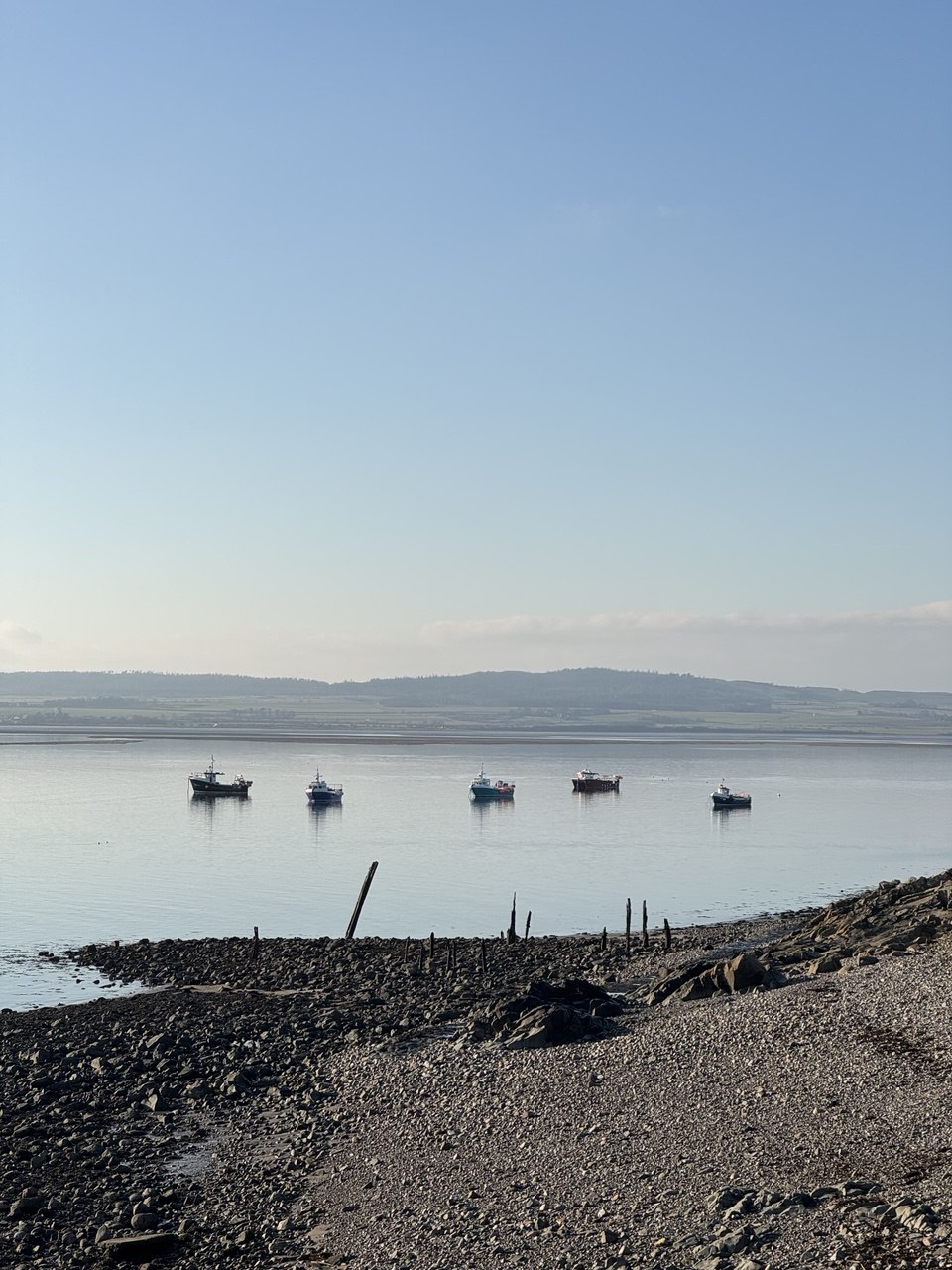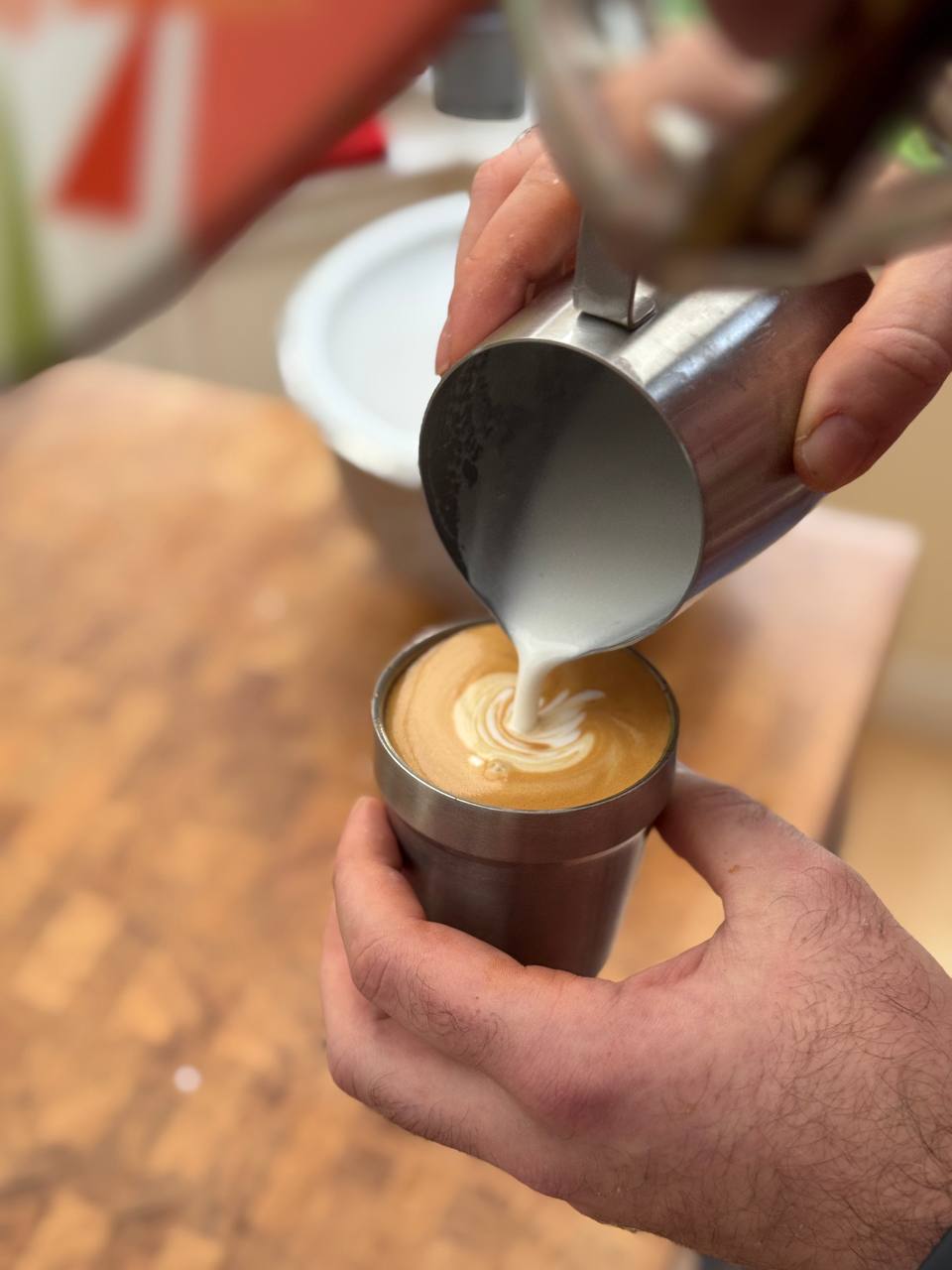|
Your weekly crème de la crème of the Internet is here!
01.10.2024 (read in browser)
This is the free monthly edition of the newsletter. If you want to receive every weekly edition, plus access the full archive of both free and paid newsletters, subscribe here.
-
#217 on chilly weather, where I appreciate Scottish weather, read about a modern take on recipes close to nature, and argue about the ways to raise kids.
-
#218 on Loch Leven, where I land on an uninhabited island, learn the history of food among British middle classes, and learn how to hotwire a car.
-
#219, which didn't happen as I was too busy driving down A1 and A720 multiple times a day in addition to our trips to London and Highlands.
Don't miss out on future newsletters – upgrade now to get access to all of them.
On going places
This week's edition is out way later than I planned it to be, and yet it was a conscious decision to put some of my projects on hold for a few weeks while I went to London to see my parents and sister and spend some quality time altogether for the first time in half a decade.
Well, that, and we've got to hang out with our metropolitan friends for a bit, and also stopped by a newly opened vegan restaurant. As they say, you must know your enemy to win, but here I was genuinely rooting for the chef throughout his performance on Great British Menu, and could not miss an opportunity to try the dishes that wowed the judges.
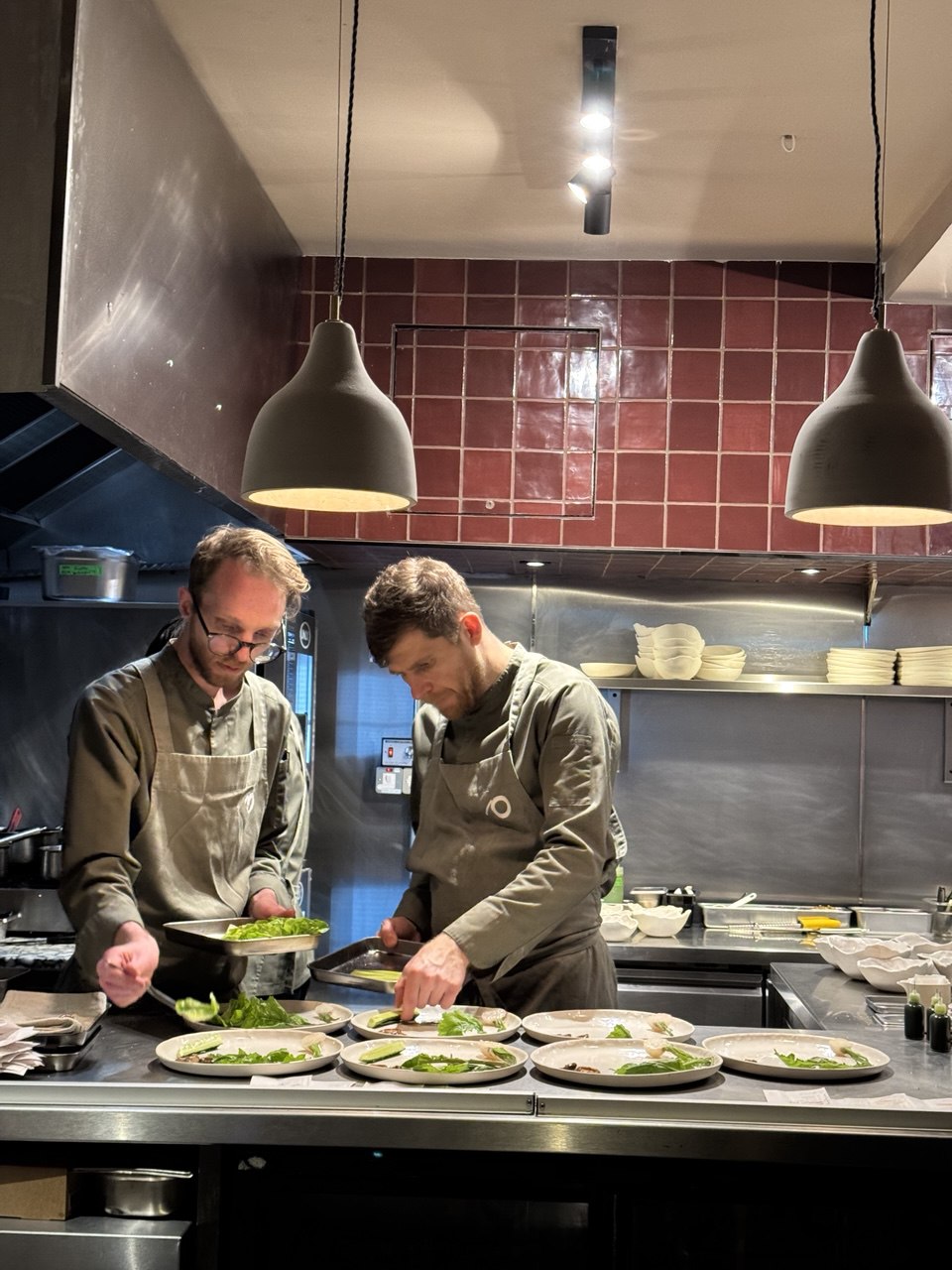
Often when getting a tasting set, it's hard to appreciate all courses – some meals always stand out and some fail to impress. Here everything was very balanced. I can't say I felt like I had a proper vegan main – everything was delicious but felt like a fancy side dish – but some starters and the dessert were incredible.

I guess my main inspirational takeaway here was the way the chef used different (but all alternative) milks and fats throughout the dinner. Cashew milk would be used to add texture, coconut fat to introduce flavour, rapeseed oil to help it emulsify, and so on.
That being said, the first thing we cooked back home was a selection of aged steaks, and boy-oh-boy, they were worth the wait.
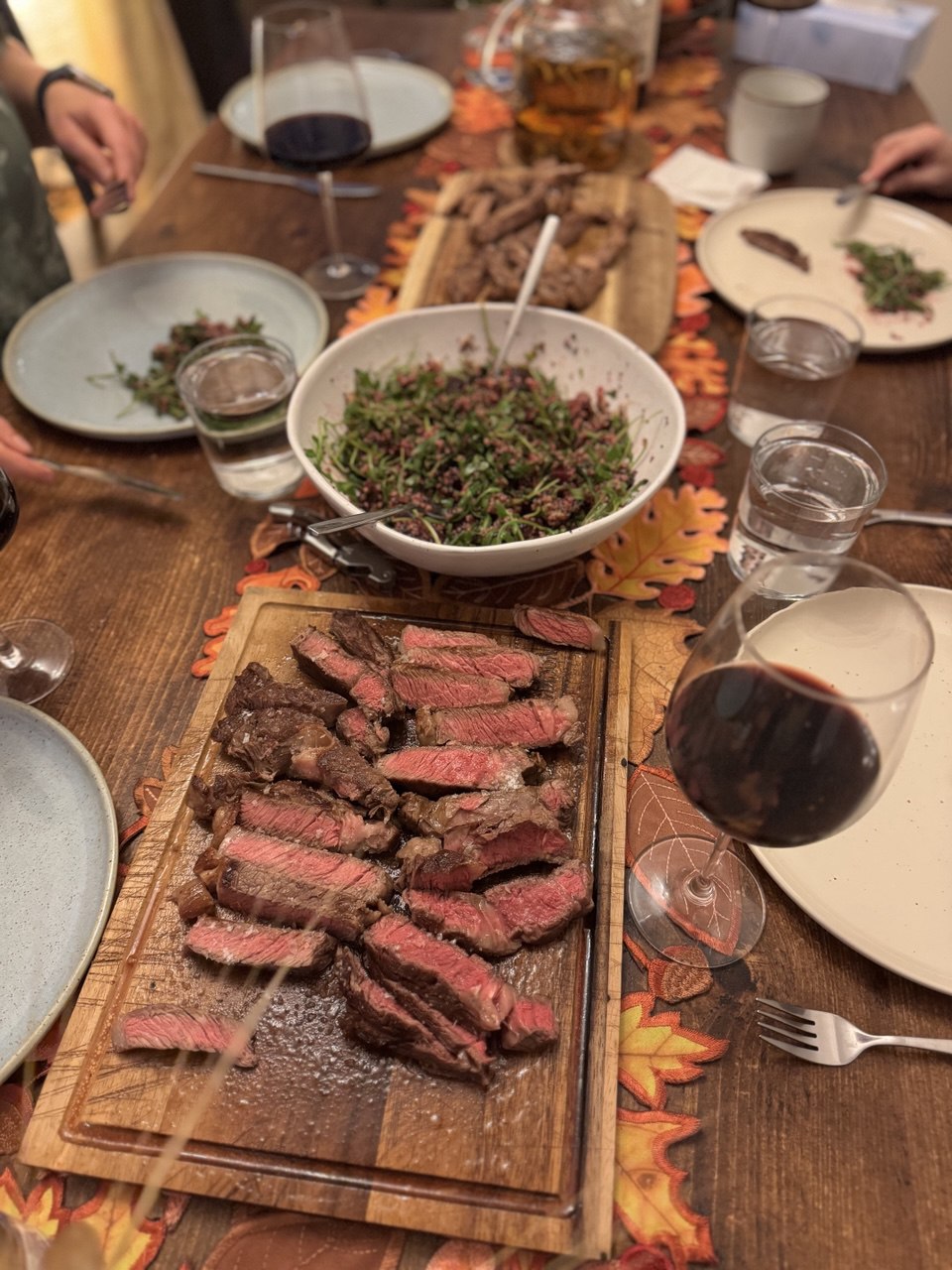
The rest of the week was an attempt to visit all sights in Scotland at once, from the closest points of interest in the Highlands to the National Museum of Flight here in the country.

The museum exceeded all my expectations, by the way, mostly because I didn't have many, but also because they have four hangars filled with various planes from different eras. The supersonic passenger jet Concorde hasn't flown for more than twenty years now, so I obviously couldn't see one when operational, but it was quite cool to enter one of the very few Concordes in the world, albeit in a museum.
Also, just yesterday we drove to Culross and grabbed a bite on the way back.
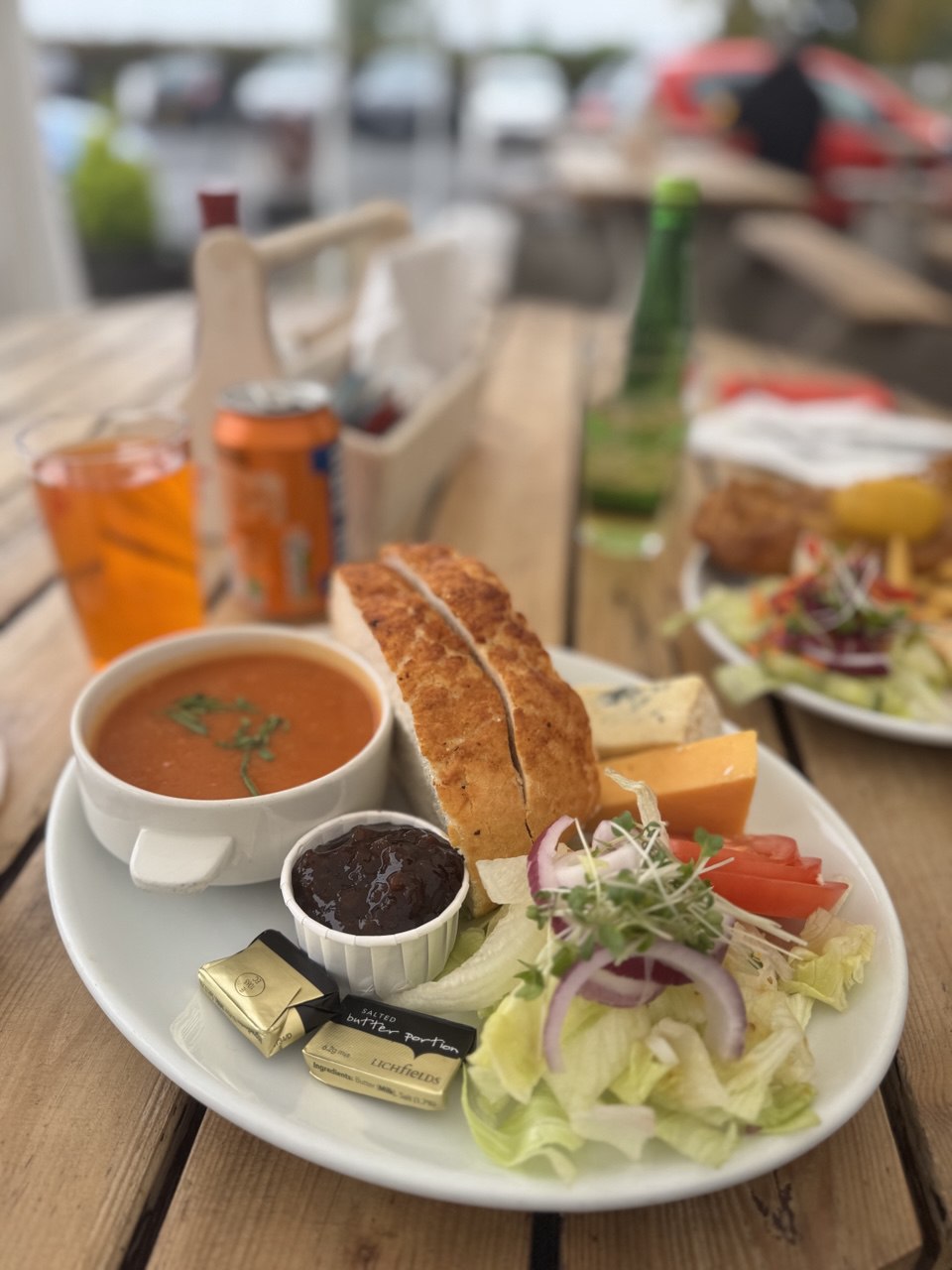
Those slices of cheese are not the cook's laziness, but a legit example of a Ploughman's lunch, albeit a historically correct raw onion is replaced with a chutney, but that's a good thing in my book.
Things I enjoyed reading
I don't remember when I wrote my first blog post but it probably was around 15 years ago as well. I almost don't blog in its common sense though – this newsletter, despite having an archive, is more temporary than most blogs, and I rarely stick to a specific topic.
I do agree with reasoning though: you either blog for yourself, or do it to make a living:
I keep this blog for me to write, not necessarily for others to read.
Many of these kinds of retrospectives contain graphs of views over time or the most popular posts; but I’m not showing it to you because I can’t—I don’t keep any statistics whatsoever.
I don’t really care—and I don’t want to care—about how many readers I have or what posts are and aren’t popular. I worry that if I add statistics to the blog it’ll change from an activity I perform for the activity’s sake, to an exercise in hunting clicks where I write for others instead of for myself.
I do have statistics though, but it's hard not to given that I have to email every edition to hundreds of recepients.
People seem to have very different perspective on the Israel-Hezbollah conflict, but I grew up reading and watching spy movies (I still am), and the story with exploding pagers is somewhere among plots I would not believe in even if I read it in a sci-fi book.
The first part of the plan, booby-trapped walkie-talkies, began being inserted into Lebanon by Mossad nearly a decade ago, in 2015. The mobile two-way radios contained oversized battery packs, a hidden explosive and a transmission system that gave Israel complete access to Hezbollah communications.
For nine years, the Israelis contented themselves with eavesdropping on Hezbollah, the officials said, while reserving the option to turn the walkie-talkies into bombs in a future crisis. But then came a new opportunity and a glitzy new product: a small pager equipped with a powerful explosive. In an irony that would not become clear for many months, Hezbollah would end up indirectly paying the Israelis for the tiny bombs that would kill or wound many of its operatives.
I am surprised Netflix didn't announce (yet?) a movie following the story.
As a Brit, this essay (which is technically a summary of a way bigger essay) saddens me a lot, but I am a true believer in "measure to manage" approach, so talking about problems is a good first step towards resolving them.
When my parents were born, Britain had been the richest country in Europe for a century, and still the second wealthiest on earth after the United States. Today many British regions are near outliers in western Europe on poverty, and the few foreign visitors who go outside the historic heritage cities are shocked by how run down our towns are. Yet the fundamental reasons for why Britain has fallen behind are strangely absent in the national debate; indeed, most politicians aren’t even that interested in the subject.
At the same time, taxes here in Scotland are higher than in the rest of the country, so probably moving back down South (even if just by a few miles across the border) might be a smart step in the nearby future.
I quite enjoyed this take on how social media and algorithms transform the way people measure value, where even personal things, experiences, and so on are measured by likes and followers.
And when the reception started to roll in, I’d hear good news, but gratitude lasted moments before I wanted more. A starred review from Publisher’s Weekly, but I wasn’t in “Picks of the Week.” A mention from Entertainment Weekly, but last on a click-through list. Nothing was enough. Why? What had defined my adult existence was my ability to find worth within, to build to an internal schematic, which is what artists do. Now I was a stranger to myself. I tried to fix it with box breathing videos, podcasts, reading about Anna Karenina. My partner and I were trying for another baby, but cycles kept passing, my womb couldn’t grab the egg. A kind nurse at the walk-in said: Sometimes your body is saying the time’s not right. Mine was a bad place.
I relate to it to an extent: the author remembers how they enjoyed skating alone, until eventually they saw someone doing it better and quit skating completely. I just protect myself from this problem by doing things I enjoy in complete solitude.
I didn't like algorithms on graphs while studying computer science, probably because at the age of eleven there are more exciting things to do instead of writing BFS in Pascal, but these days I am rather fascinated by problems like this one:
Over the years I’ve been developing these puzzles, I’ve gone through an amazing number of algorithms for doing that job. Each one was unsatisfactory for some reason, and I threw it away, and moved on to the next.
I might by now have collected all the ways to do this job wrong! So I thought I’d write up all my mistakes, as a case study in all the ways you can solve this particular problem wrongly – and also in how much effort you can waste by not managing to find the existing solution in the literature.
As the author points out, this is also a great example of how the same problem could be approached from different angles. If you want to add more complexity to it, you might as well look up online cycle detection.
This post on building blocking software might seem niche, but most ideas apply to other products as well:
Now here’s the interesting part - users can always uninstall blocking software. So if a user is in a truly self-destructive state, the strictness of the system becomes the amount of effort required to delete the blocking software.
In other words, there is an environmentally imposed ceiling on strictness equal to the effort required to delete blocking software. You can try to make it harder to delete your software, and many have – but it is always possible. And depending on the platform, deletion might be trivially easy (iOS, for example).
One correction though, and also a big secret of the iOS industry, is that it's relatively easy as a developer to prevent the user from uninstalling your app. It involves one line of code and two online forms.
You even have some apps like this already (try adding Messages to your home screen and then delete the app).
Most hypothetical questions on the Internet are not far from "what'd you do if you win in a lottery", so this one definitely stood out: given a chance to examine a dinosaur, what would you (a group of people interested in dinosaurs) look out for?
So I’m intrigued by the idea that extant birds show us one way that a saurischian lung/air sac system can work, but don’t exhaust the territory, anymore than kangaroos show us all the ways that mammals can reproduce. Maybe sauropods had even better lungs than birds! Or maybe not. Likely they were doing their own weirdly specialized thing — or many weirdly specialized things — that left few to no diagnostic traces in their skeletons. We can be pretty confident that at least some of the pneumatic diverticula of sauropods worked essentially identically to how they do in birds (see Woodruff et al. 2022 and this post), and mid-dorsal pneumatic hiatuses in juvenile sauropods — predicted by me in 2003, found by Melstrom et al. (2016) and Hanik et al. (2017) — suggest that their air sac systems were broadly comparable.
Would would be a similar by vibe question to a software engineer?
I've been a part of Western world for nearly a decade now, but still giggle coming across the character from childhood fairy tales portrayed as one of the darkest nightmares in movies. It's quite fun to read about its origins though, and there are many things I didn't know:
Slavic fairy tale collector Vasilii Levshin (1746-1826) is considered the first to capture Baba Yaga stories in writing. And we cannot ignore the 1788 comedic opera, “Baba Yaga,” by Prince Dmitry Gorchakov and Mathias Stabingher. Designed for Catherine the Great’s royal court, the ancient witch’s complex portrayal on stage makes me long to see this performance as it once was. Before the final curtain, Baba Yaga remains the sole character in the spotlight. Was she hunched, clenching a giant pestle? Was she dressed in rags or a gown as black as the dark forests of Russia? So many details are lost to history, even as we do know Baba Yaga closed the show with a solo about a better world that could come to be.
Terror. Hideousness. Hope. Possibility. Yes, this is Baba Yaga, the witch, the motivational sorceress, sharing a lesson and a hint of optimism for audiences to take home. But like someone journeying deeper into the woods, weaving between peeling birch trunks and thorns reaching out to pierce us, we must creep beyond the easily accessible written records of history and published creativity.
The author also seems to imply that Baba Yaga is a big time feminist. I am not arguing obviously, but I probably should re-read Nekrasov's poem Baba Yaga, the Bony Leg to reconfirm.
I am a big fan of short UX case studies, partly because I am often a consumer of the products being researched, and partly because no matter what code you write, it eventually leads to some user experience, and you as a developer could often influence certain directions to make sure the experience for both developers and users is as good as it gets.
-
Framing
How information is presented affects how people make decisions.
By omitting calories, McDonald's frames the choice around the small price difference between meal sizes rather than the larger health impact.
-
Shameless machines
Without a cashier taking your order, McDonald's kiosks eliminate any sense of judgment, encouraging more indulgent choices.
And with these kiosks, they increased their revenue by 15%.
Talking about McDonalds though, even if kiosks bring up the average bill, I'd rather queue to one than talk to a cashier without any wait, so from the user experience perspective it's definitely a win for me.
I think cat memes were a bigger thing 5-10 years ago, but I might be wrong as I still see cats in Instagram reels and Twitter posts here and there. It's hard to measure though, partly because the amount of content out there is very different to the Internet landscapes of the previous decade.
The author suggests that cat memes were a thing even a century ago:
Postcards in the early 20th-Century city arguably marked the first time in history that communication at that speed was affordable and widely accessible to the average person. Between 1900 and 1914, says Weiss, "there's this massive worldwide postcard craze to the point where people talk about it being a disease in the public bloodstream".
During this era of postcard mania, uncountable millions of postcards circulated, and it was a perfect moment for cats to take over the new medium. At the time cats were considered more than just pest control. Monarchs and socialites, including Queen Victoria, were famous cat enjoyers, and the animal's association with Halloween was well-established. Some postcards featured cats just being cats: sipping milk from saucers, playing with yarn, basking in the sunlight. Others dressed cats up as humans, working jobs and taking part in domestic scenes.
I guess my biggest surprise from the article was the extent of mail network during its Golden age. You could post a few cat meme postcards to your friends in town in the morning and people would get them by lunch.
And here I am, sending some funny pics on Instagram in 2024 and they're marked as "seen" only a week later.
Things I didn't know last Tuesday
I came across the joke about drivers cutting through oncoming traffic's lane and to understand it had to get a briefing on racing techniques.
In motorsport, the racing line is the optimal path around a race course. In most cases, the line makes use of the entire width of the track to lengthen the radius of a turn: entering at the outside edge, touching the "apex"—a point on the inside edge—then exiting the turn by returning outside.

At least now I understand what racing drivers are actually competing at – they try to figure out the most efficient racing line considering lots of things happening around.
I don't think I paid much attention to flags during my only visit to Tenerife years ago, but seems like they confuse Scottish tourists a lot:
The flag closely resembles the flag of Scotland, the difference being a darker shade of blue. There are two popular traditions on the island of Tenerife trying to explain the resemblance. One is that the flag was adopted as a mark of respect to the bravery of the Scottish sailors in the Battle of Santa Cruz.
An alternative theory is the most influential masters of the island of Tenerife chose a design similar to the Scottish flag belonging to the Masonic Grand Lodge of Scotland and proposed a similar flag for the maritime province of the Canary Islands, which later became the flag of Tenerife.

I like the first theory more, so will stick to it from now on.
I didn't pay much attention to orchestra setups either, so had to look it up to confirm:
The violin is a comparatively quiet instrument, and a solo player cannot be heard over the power of the brass.
Having violinists at the front of the stage also helps the sound reach the audience's ears without competing to be heard over the louder instruments.
A disclaimer though: these days orchestra might have a different configuration because composers feel like they're too contemporary to stick to the rules.
I am pretty sure it's mostly an American thing, but I saw it a few times in quoted newspapers and old pictures.
Some say the mark began during a time when stories were submitted via telegraph, with "-30-" denoting "the end" in Morse code. Another theory suggests that the first telegraphed news story had 30 words. Others claim the "-30-" comes from a time when stories were written in longhand — X marked the end of a sentence, XX the end of a paragraph and XXX meant the end of a story. The Roman numerals XXX translate to 30.
Not sure if anyone does it nowadays, but there seem to be no proven origins of this habit.
Just came across a big part of British history, that is, apparently the worst sandwich one could get when traveling:
In British popular culture, the British Rail sandwiches were the sandwiches sold for consumption on passenger trains of the former British Rail (BR), during the period of nationalisation from 1948 to 1994.
I couldn't find photos of those sandwiches, but York museum published their recipe standards and surely they are not that much worse than most meal deals.
Next time I cook something questionable, everyone at the table will be wearing grayscale glasses to boost my chances.
We found that colorblind men were indeed less food neophobic than non-colorblind men. We replicated this finding in another study, with colorblind men also reporting lower levels of food disgust. Seeing the world with a restricted color palate seems to mitigate an emotion-based resistance to new foods.
I wonder if sunglasses might have a similar effect, probably not to the same extent. It also explains how all those restaurants in absolute darkness survive for years – at that point food flavours and presentation don't matter as much.
I shared a few articles about bonsai over years, but haven't encountered this concept before:
In niwaki, the whole idea is to keep the tree in accordance with its surroundings. The Japanese art of cloud pruning is heavily influenced by nature—gardens drawing inspiration from mountains, waterfalls and rivers.
The way Japanese gardeners do this is by combining different techniques such as trimming, clipping and pruning. The idea is to signify the essence of the tree. Niwaki creates outstretched branches and rounded canopies, which in Australia, we know as cloud pruning.

Looks really nice, and "cloud pruning" describes it quite well.
This is quite a hilarious albeit a bit dark piece of history:
Aug 1985: Four British ex-servicemen, all missing both their legs, embarked on a tour of France to promote English wines. Their motto: "You don't have to be legless to enjoy English wine."
Let me explain the joke, in British slang "legless" means "very drunk".
There is something special about pointles but huge statues scattered all over the globe:
The statue of Byakue (“white-robed”) Kannon was finally completed in 1960 after years of semi-abandonment, and quickly became a local icon due to its size and striking appearance, standing at over 82 feet, with its serene smile visible from the vicinity. A temple was also founded on the site, memorializing the victims of World War II and the atomic bombs.

Such a shame we build skyscrapers more often that things like this.
I knew that some plants dont' have annual crops, but had no idea they manage to synchronise and produce or skip crops together.
Most plants do not produce regular annual seed crops, but switch between years of bumper seed crops (known as "mast years") and years with low seed production. Intriguingly, these bumper crops occur simultaneously in plants living alongside each other, but the synchronisation can also extend across hundreds of kilometres. This highly variable and synchronised seed production is known as masting. Masting is a characteristic of many forest tree species, including oaks, beeches, pines and spruces, but it is also found grasses and perennial herbaceous plants.
What's odd is that science still doesn't fully understand the mechanics of masting.
Book of the week
Most novels I've read pick a character and stick to them throughout the story while all other variables in the equation change.
Daniel Mason's North Woods does the opposite: the scene is set on a small patch of woodland in New England, but characters come and go; only the place stays the same. It's quite different from stories about a place, as the place itself doesn't really matter that much here. The story could've taken place somewhere else, as its fragments picture American lives through centuries, and the author's strokes are quite broad to focus on any specific events.
Indeed, the young man in search of a bride, would be well advised to consider apple cultivation. Open any of our chivalric narratives, and you will conclude that it is the knight that is most desired by the female of the species. Well, I have been a soldier, and I am well familiar with the shy eyes that gaze out at a passing regiment from gently parted curtains, but can assert that there is nothing like the sight of an apple to ignite the female imagination. Is it an accident that our artists chose none other than Malus domestica to depict the forbidden fruit which tempted Eve? Was not Eve herself in fact a cutting, taken from Adam’s rib?
Still, I was an old man of fifty when I came to this place, and no great beauty. Time had creased my brow, garlanded my chin with several companions, and furred both ear and nostril generously against the cold. And yet, I had been here but one season, when the maid of V——, my neighbour, having tasted of the fruit, offered to help me with its harvest, tried to tickle me in the orchard, and asked, more than once, if she might climb the ladder while I secured it, an offer which I turned down, well suspecting what sight she had in store should I look up.
No matter the temptation, I have always put my garden first.
I was rather skeptical picking the book up. It's described as historical fiction (a genre I tend to avoid by all means), but reviewers also seem to highlight that it blurs genres – something I appreciate in novels a lot.
If I were to describe it without talking about the plot, I'd say the book is quite inventive, and while I am no stranger to getting absorbed by the written word, here it's done using completely different tools.
Thank you and see you in a week
(or in a month)!
|








